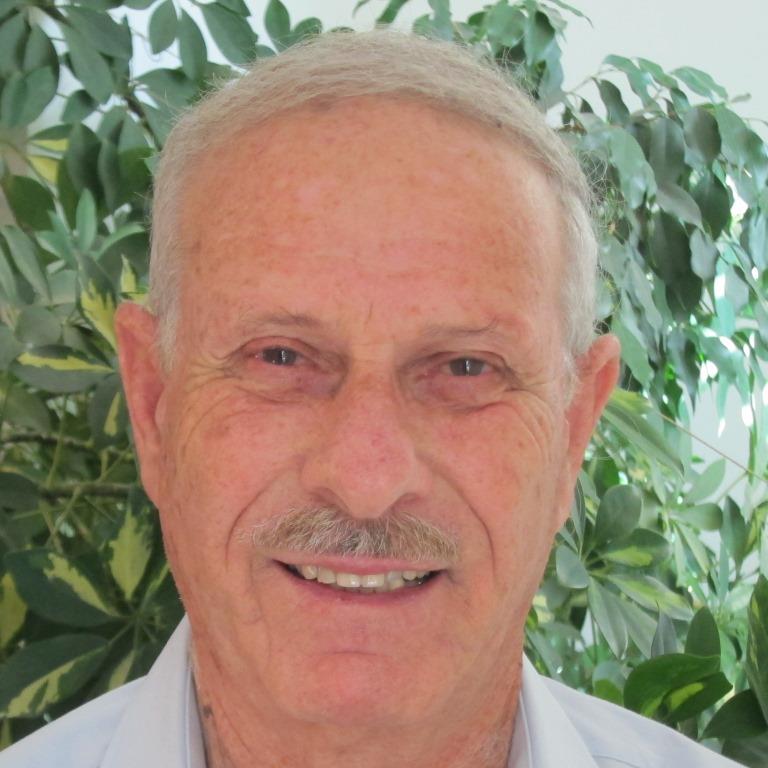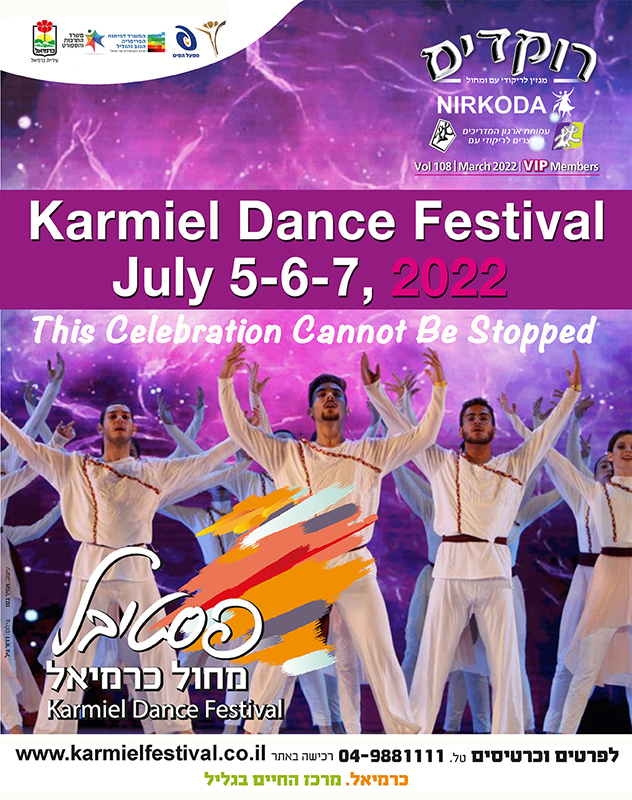- Home
- Rokdim Nirkoda 108
- Books, Ladies and Gentlemen, Books …
Numerous books and countless articles have been written about Israeli folk dance, but to date, no such book has been written, exceptional in its power, content, and uniqueness in the extensive tractate of this field of dance.
Israeli folk dances are different and special compared to folk dances of the [other] countries of the world. Many debates and opinions among experts, present Israeli folk dance in a different light. There are those who dismiss their definition as folk dances and folklore and those who mark them as a trend that characterizes our country and transforms them into something ‘unique-national-popular’ that has the special identity of the renewed people of Israel.
There is the eclecticism and immense variety of dance steps, the variety of music, the songs, (including the use of international music), the movements, as if they do not have a national uniqueness. But perhaps it is this “lack of uniformity” that creates the uniqueness that can already be called folk dance and perhaps unique Israeli folklore.
To open this issue to other aspects, to add to the definition of our folk dances, the title “folk dance”, this new book, “Jewish inspired Israeli Dance“, adds another tier to make our dances something characteristic of the people residing in Zion [Israel].
Dr. Shmuel Saadia is the author of the book. He is an attorney by profession and has himself been dancing for many years. In addition, he is an expert in human rights law and has published eight books. His record of extensive public activity includes membership in the Herzliya City Council.
This is, as mentioned, a unique book that deals with the connection between Israeli folk dance and many aspects of Jewish tradition. In addition to the professional content, the book also includes a record of the author’s personal acquaintances, to an astonishing network of connections with a host of public figures in the State of Israel.
Joining the professional consulting and editing team were several choreographers and dancers in Israel. Among them: Moshiko Halevy, Shlomo Maman, Moshe Telem, Avi Peretz, Lior Cohen and many others, who are good at creativity and personality reviews.
Shmuel Saadia on the book:
“My book seeks to examine and present to the reader the connection and affinity between Israeli folk dance and Jewish heritage sources, including the Torah, the Prophets, the Scriptures, the Piyyutim, the Prayers and the Psalms.”
In the book you can find a comprehensive review of songs for which dances were created, whose origin is based in Jewish heritage. Sources such as The Song of Songs and Psalms, which provide richness as in an overflowing spring. All this while researching the question of whether the dance choreographers were influenced in the choice of the songs from the sources, and whether there is an affinity between the Jewish content and the dance movements. What is the cultural influence from the family home on the composition of the dances created?
The book examines how distinctly secular Jews such as Yoav Ashriel or Moshe Telem, were influenced by the sources despite having a secular worldview.
The book provides an extensive overview of the “generation of giants”, the founders of the folk dance movement and their connection to the magnificent Jewish heritage.
A thick book, 705 pages long, full of examples and life stories. Shmuel Saadia takes a dance that is linked to a particular song and then links the lyrics to a passage from the sources. Thus, he connects the dance to quotes from the sources. And if he does not connect the dance, then he ties the song of the dance to the Jewish sources.
In dances for the stage by dance ensembles in Israel, the choreographers create folklore performances such as Harvest Dances, Farming Dances, Working the Land Dance, Jewish Wedding Dances, Chassidic Dances, Building the Country Dances, Arab Debka Dances, and dances depicting unique Israeli life. In these dances, the choreographers try to combine movements and staging that match the nature of the song as well as the lyrics with authentic backgrounds.
On the other hand, in folk dances for the public, a dance is created to a song. However, in most cases, there is no connection between the movements and the lyrics of the song. For this reason, even in this book, the author did not try to find a connection between the steps of a dance and Jewish heritage sources. The link the writer found is only between the lyrics to Jewish sources. The connection between a song and a dance is accidental; only the connection between a song and the sources is strong and interesting.
The choice of dances and songs in this book is consistent with the idea of the connections between the songs and the sources as well as the connections between the songs and the dance connected to them (but as mentioned, there is no connection between the dance and the sources).
In terms of the analysis and explanations of the songs and their connections with Jewish sources – the book is an important cultural asset. The author did well to add the dance dimension to these explanations, which adds a special touch to the content of the entire book.
Examples:
The song: “Et Dodim Kala – The Time For Love Has Come”; Dance choreographer: Moshiko Halevy; Lyrics: Rabbi Chaim Ben Sahel; Melody: folk. Excerpts from the song: Et Dodim Kala / Boi L’Gani / Parcha HaGefen / Henetzu Rimonim / Chalaf Hageshem / HaStav Avar / Kumi Rayati / HaCheshek Gavar / …
Following the song is an explanation: The lyrics of the song – a piyyut as a love song for the bride “correspond” with the Song of Songs and the atmosphere of spring and renewal based on the song: “Parcha Hagefen – The Vine is Blooming, Henetzu Harimonim – The Pomegranate is Budding, Kumi Rayati – Arise My Love ” originated in “The Song of Songs” of King Solomon.
The song: “Mi Ha’Ish”; Dance choreographer – Eliyahu Gamliel; Composer – Baruch Hayat. The lyrics of the song: “Mi Ha’Ish HeChafetz Chayim /Ohev Yamim / Ohev Yamim, Lir’ot Tov / Netzor Leshoncha Meira / U’sfatecha Midaber Mirmah / Sur Mera V’aseh Tov / Bakesh Shalom Ve’Rodfehu – Who is the man who desires life / Loves days / Loves days, to see good / Keep your tongue from evil / And your lips from speaking deceitfully / Turn away from evil and do good / Seek peace and pursue it”.
Explanation: The lyrics of the song are from Psalms, Chapter 34, verses 13-15, and attributed to King David. It is natural for it to find its way to the dance floor. This is what the sages say in Talmud Bavli (the Babylonian Talmud), Tractate Pesachim, page 117a: “With regard to all songs and praise that David recited in the Book of Psalms, Rabbi Eliezer says: David said them about himself; Rabbi Yehoshua says: he said them about the community… LeDavid Mizmor (To David a Psalm) – teaches that the Shechina [the visible symbol of G-d’s presence in the tabernacle] came over him and then he spoke through poetry/song. The song describes the character of a man who wants to avoid doing evil, do good and strive for peace.
And so Saadia brings in the book more than a hundred dances and songs with explanations and quotes from the Bible, the Talmud, and other sources. More than 80 dance choreographers receive credit in the book for dances they created, with the explanations attached to them. Moshiko (Moshe Itzhak-Halevy), Moshe Telem, Shlomo Maman, Eliyahu Gamliel, Rivka Sturman, Sara Levi-Tanai, Yonatan Karmon, Shalom Hermon, Avi Peretz, Shalom Amar, “star” with many of their dances.
Many others are reviewed in the book – including Gadi Bitton, Gila Paz, Raya Spivak, Moshe Eskayo, Zvi Friedhaber, Zvi Hillman, Tuvia Tishler, Yaron Ben Simhon, Victor Gabbay, Giora Kadmon, Yankele Dekel, Avi Levy, Israel Shiker, Chayim Shiryon, Rafi Ziv, Mishael Barzilay, Avner Naim, Yehuda Emanuel, Eli Ronen, Marco Ben Shimon, Seadia Amishi, Shmulik Gov Ari, Zeev Havatzelet, Tamar Alyagor, Levi Bargil, Meir Shem Tov, Sefi Aviv, Shoshana Kopelovich, Vardit Hadad, Nourit Grinfeld, Pnina Klein, Yaron Elfasy, Ofer Alfasi, Eli Segal, Zion Ohayon, Yom Tov Ohayon, Miri Akuni, Eyal Ozeri, Shimon Asor, Barry Avidan, Kobi Michaeli, Batia Kronenberg, Shimon Shuker, Elad Shatmer, Yaron Carmel, Tamir Scherzer, Yankele Ziv, Naftaly Kadosh, Itzik Ben Dahan, Michael Barzelai, Dov Orbach – partial list.
Each dance leader receives a bio, a color photograph and a sample of one or more dances from the repertoire he /she has choreographed.
A festive launch, with many guests, was held at Kibbutz HaOgen with the participation of Moshiko and [Moshe] Telem, MC’d by Yaron Carmel and Elad Shatmer.
Special greetings were sent for the event by President Isaac (Yitzhak) Herzog, Benjamin Netanyahu and other leaders of the country. A special blessing was made by former minister Avigdor Kahalani who composed songs for which dances were also created.
People in the life of Shmuel (Shmulik) Saadia.
Shmulik’s tapestry of acquaintances, as a public figure, includes the names of many of our country’s senior officials from a variety of roles and positions. People like prime ministers, ministers, mayors, poets, composers, various artists and more. An extensive chapter in the book brings pictures of Saadia’s many social and professional acquaintances, as well as quotes from the words of legal and intellectual figures in Israel.
For example:
Celebrities like the first poet, writer and author, Yoram Taharlev z”l; the hero of Israel, [Medal of Valor (1973) and Medal of Distinguished Service (1967)] Avigdor Kahalani; former Head of the Mossad, Maj. Gen. Res. Danny Yatom; former Chief Rabbi of Israel, Meir Lau (the father); Knesset Speaker, Yariv Levin; The Parvarim; singer, Izhar Cohen; Minister of Transportation, Miri Regev; Justice Minister, Amir Ohana; Israeli jurist, Yosef Harish; singer/musician, Sagiv Cohen; singer Ruhama Raz; Minister of Justice Prof. David Libai; President Yitzhak (“Bougie”) Herzog; Prime Minister Naftali Bennett; former Prime Minister Ehud Barak; former Prime Minister Benjamin Netanyahu; former Minister of Health Dr. Efraim Sneh; Dance troupes from Israel and around the world; former Minister of Education, Amnon Rubinstein; President, Reuven “Ruvi” Rivlin; Israeli linguist, Dr. Avshalom Kor; Nadia Cohen – widow of Mossad member, Eli Cohen z”l; Minister of Education, Yoav Galant; President of the Supreme Court of Israel, Esther Hayut; Attorney General, Dr. Avichai Mandelblit; Interior Minister, Ayelet Shaked; former Commander of the Navy, Maj. Gen. Eliezer (Eli) Marom (“Chayni”); former Defense Minister, Binyamin “Fuad” Ben-Eliezer z”l; Police Commissioner, Roni Alsheikh; former Head of the Mossad, Yossi Cohen; Economics Minister, Prof. Shimon Shitrit; former Minister of Defense, Amir Peretz; former Chief Justice of the Supreme Court, Meir Shamgar; Mayor of Tel Aviv, Ron Huldai; former Minister of Finance, Moshe Kahlon; Knesset member, Orly Levy-Abekasis; Poet, [and 2015 recipient of the Israel Prize for Hebrew Literature and Poetry], Erez Biton; Brigadier General, Effi Eitam; [senior Israeli journalist], Ya’akov Ahimeir; Minister of Justice, Gideon Sa’ar; Minister of Foreign Affairs and Alternate Prime Minister, Yair Lapid; Author, Eli Amir; former Minister, Yair Tzaban; Journalist and economic correspondent, Nehemia Shtrasler; former Minister of Agriculture, Transportation, Intelligence, Foreign Affairs and Finance Minister, Israel Katz; Mayor of Karmiel, Mr. Moshe Koninsky; Chairman of the Histadrut, Arnon Bar-David; Mayors of: Ra’anana – Mr. Chaim Broyde, Herzliya- Mr. Moshe Fadlon and Hod HaSharon – Mr. Hai Adiv; Minister of Diaspora Affairs, Dr. Nachman Shai; Motti Ashkenazi; former President of the Supreme Court, Ms. Dorit Beinisch; former Minister of Justice and Finance, Prof. Yaakov Neeman, z”l; former President of the Supreme Court, Miriam Naor, z”l; Israeli lawyer and former Attorney General, Yehuda Weinstein; [former] President of the Supreme Court, Prof. Aharon Barak; former President of the Supreme Court, Dr. Asher Grunis; Minister of Internal Security, Mr. Omer Barlev; Minister of Environmental Protection, Tamar Zandberg; Commissioner of Israel Police, Yaakov Shabtai; [an American-Israeli former professional basketball player and current goodwill ambassador of Israel], Tal Brody; current Prime Minister of Israel, Naftali Bennett; former member of Knesset, historian and novelist, Michael Bar-Zohar – and this is a partial list.
Also featured are photos of lesser, but of no less important, celebrities, including heads of charity associations, food associations for the needy, rabbis, police officers, judges, academics, additional dance leaders and choreographers, ambassadors and, of course, Shmulik’s own family.
- Three dance books for children
Sidebar: This book, in the form of a children’s book, is illustrated and colorful, both educational and experiential, in order to make the dance accessible to the child through all the senses. It is a tool for the dance leader and teacher to learn the dance.
Dr. Levi Bargil, the “Doctor” of Children’s Dance, presents a unique work in his field of specialization – children’s dance books. For 35 years, Levi has been involved in this special field of dancing for children; it spans a wide range of sub-fields – writing a doctoral dissertation, guiding children, mentoring teachers and instructors, choreographing dances, professional guidance, and most recently, as previously mentioned, writing dance books for children.
In 2016, Bar-Gil published the book, “The Art of Teaching Children’s Dances” – Children’s dances in the pace of time. This is a comprehensive instruction book (192 pages) that deals with a variety of planning issues like, characteristics of the population, social climate, safety issues, lesson planning, learning and social experience, dealing with children with special needs, dance notation and methods of teaching, the characteristics of the different ages, and of course, the dances themselves with their social, mental, physical value.
And now the three new books – Innovative and useful holistic work in thought and content.
Dr. Bar-Gil says:
“This book, in the form of a children’s book, is illustrated and colorful, both educational and experiential in order to make the dance accessible to the child through all the senses. It is a tool for the dance leader and teacher to learn the dance”.
The first book is called “Sipurikud” (Dance Story) – From a Fascinating Story to a Satisfying Dance”. I wrote this book together with Keren Becker and the illustrator, Boaz Crispin. I took a familiar children’s song, for example,”Adon Chardon” (Mr. Lizard) by Leah Naor and Nahum Heiman. I took a section of the story which is read to children and added comments about what we learned from the story. The dance steps are described according to the rules of notating dance steps. Next to the text, on a separate page, there is a colorful drawing of the amusing lizard. On the page about the dance, there is a barcode linking to the song with a demonstration video of the dance accompanied by the original song adapted to the dance movements. The instructor can scan the barcode and can play the song on his/her cell phone. With the help of dancers, the author provides a demonstration of the dance steps. This complete combination of sight, hearing, movement, and color imparts happiness, joy, interest and pure pleasure.
The second book called: “RikuDiklumMishak” (Dance Recite Play), I wrote with Dr. Edith Sulkin and Dr. Hannah Nitzan, an expert in music and education. Here, too, I present a story, song, dance, and a barcode for watching the dance and listening to the song.
The third book is, “Dance Recite Play – Holidays Throughout the Year”. It includes a dance for every holiday with its song, for example: “Rosh Hashanah” by Naomi Shemer; “BaSukkah Shelanu – In our Sukkah”, by Leah Naor and Moshe Wilensky or “Kach Holchim HaShotlim – This is How the Planters March”, for Tu B’Shvat.”
Levi Bargil (60), is married to Ayelet, a professional dance teacher, and is father of two. He is a graduate of the Wingate Institute for Physical Education, and holds a Doctorate in Children’s Dance. It is likely that he is the only one in Israel with such a doctorate, perhaps in the world. His specialization is in reducing violence in schools through movement and dance, while building a positive social climate, using a unique model.
To date, he has choreographed about seven hundred children’s dances that are taught in Israel and around the world. He is the founder of “Rokdim Begil “. The company operates children’s dance sessions in 150 kindergartens, from Ashkelon to Netanya, as well as in several elementary schools. It employs fifteen certified instructors who visit these schools once or twice a week. The program is approved by the Ministry of Education and operated by local authorities or by private kindergartens. It is possible to say that, in all my years of work, thousands of children have been exposed to our Israeli folk dances. They are perhaps the future that will ensure this cultural continuity in Israel.
In Jewish communities around the world, children have been dancing his dances on Friday evenings, for 30 years. Levi speaks about a teaching visit to Brazil, when suddenly, while instructing the adults, 150 children entered the hall and performed two of his dances for him; it was a real performance.
He works at Wingate as a full-time lecturer for dance in preschool / early childhood and schools. He also is a lecturer for first-year folk dance students in Wingate. Recently, he has been teaching and choreographing dances for senior citizens in sheltered housing. He holds a dance session for adults in his hometown of Hod HaSharon and holds a weekly morning folk dance session in a park in Hod HaSharon for seniors. A fourth book for children’s dances is on the way.









Comments
התראות